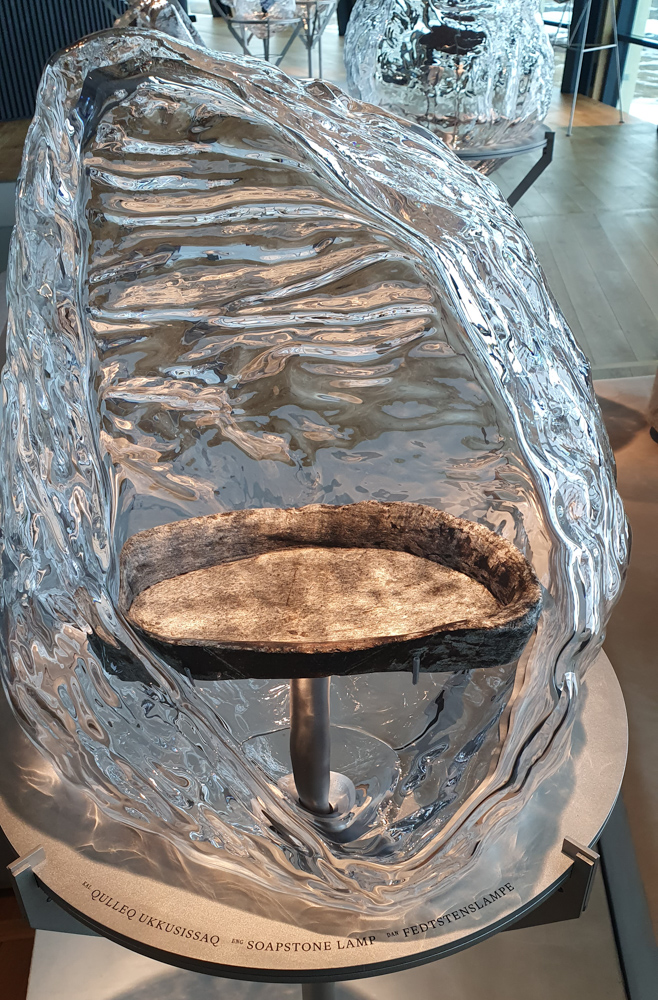Isfjordcentret

At the invisible border between the edge of Ilulissat and the start of hiking trails which guide you along Isfjorden lies a very unusual building. It is an architectural work of Dorthe Mandrup, a Danish architect, and it is the first of six such projects which will be spread along the cities in Greenland. Its name is Isfjordcentret, the Icefjord center. The outside is very modern and progressive. You can walk across the roof and enjoy the view. I find the buildings with such possibilities quite interesting because I love the idea of an interaction with it.
The inside has a content which intends to teach you about the glaciers, the Arctic, and the way we are connected to them. It is very warm and cozy inside; the danish hygge spilled inside it and made it incredibly pleasant to be at. There are several parts of the exhibition and I will show you my personal highlights – what I liked the most is the exhibition of the traditional Inuit objects and the way they are presented to a visitor. They are placed in spectacularly beautiful asymmetrical and “misshapen” spheres made of blown glass which emulate the black ice from the Isfjorden, made by JAC studios.
The last one is the most special one.
It is a piece of driftwood which was found in the Ice sheet, the largest ice body in the world after the one in Antarctica. It shows us that beneath the ice can even chunks of trees be found, indicating that Greenland was not always deeply frozen.
Also, there other installations related to ice. There is a beautiful video which explains the pathway and development of an ice crystal, which is being shown at the entrance. There are various installations which bring us closer the concepts of glacier ice, its behavior and the ways it has changed during history we were able to document.
And there is a display which shows us how the icebergs are flowing from the Sermeq kujalleq, the most productive/active glacier of the entire norther hemisphere.
Ilulissat lies at the end on the left side, on the bottom of it. It shows a tiny bit of this immense power that the glacier has, which pushes the insane amount of ice through the fjord, some 35 billions of tonnes. Absolutely stunning.












